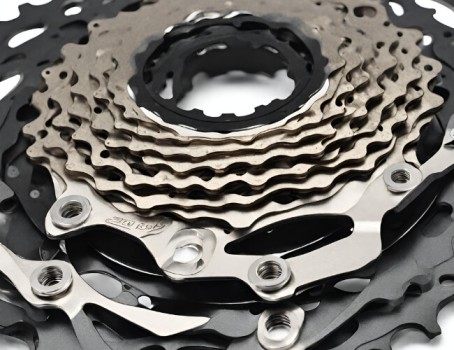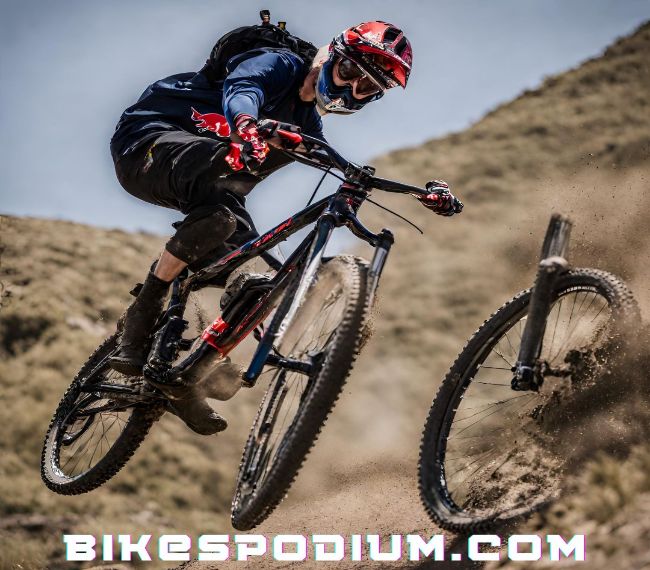
When it comes to conquering steep hills on your bike, having the right cassette can make a world of difference. A cassette is the cluster of gears on your rear wheel that allows you to shift and adjust your bike’s gear ratios. In this article, we will explore the various factors to consider when choosing a cassette for climbing hills and recommend some of the best options available.
Also Read:
Mountain Bike Cassettes Comprehensive Guide
Factors to Consider
Gear Ratios
One of the key factors to consider when choosing a cassette for climbing hills is the range of gear ratios it offers. A cassette with a wide range of gear ratios will allow you to find the perfect gear for every hill, enabling you to maintain an efficient cadence and avoid unnecessary strain on your legs. Ideally, you should look for a cassette that offers a combination of low and high gears. The low gears will help you tackle steep inclines with ease, while the high gears will allow you to maintain speed on flatter sections or descents. Some cassettes even come with a “granny gear” which is an extra-low gear specifically designed for extremely steep hills.
Number of Speeds
Cassettes come in different speeds, typically ranging from 8 to 12 speeds. The number of speeds determines the number of gears available, with more speeds offering a wider range of gear ratios. For climbing hills, having more speeds can be advantageous as it enables you to fine-tune your gearing to match the gradient of the hill. With a greater number of gears, you can find the perfect balance between pedaling efficiency and power output. However, it’s important to note that more speeds often come with a higher price tag.
Tooth Configuration
The tooth configuration of a cassette refers to the number of teeth on each gear. A cassette with a larger number of teeth on the largest gear (cog) and a smaller number of teeth on the smallest gear will provide a lower gear ratio, which is beneficial for climbing steep hills. Look for cassettes with a low cog count, such as 11-32 or 11-34, to ensure you have enough low gears for uphill climbs. Additionally, some cassettes have a “tight” or “close-ratio” tooth configuration, which means the difference in teeth between each gear is minimal. This can provide smoother gear transitions and allow for more precise control over your cadence.
Weight
While weight may not be a decisive factor for everyone, it is worth considering if you are looking to optimize your performance on hills. Lighter cassettes can contribute to a lighter overall bike weight, making it easier to power up hills. However, keep in mind that lighter cassettes are often more expensive. If you are a competitive cyclist or frequently tackle challenging climbs, investing in a lightweight cassette may be beneficial. On the other hand, if you are a recreational rider or prioritize durability and cost-effectiveness, a slightly heavier cassette may be more suitable.
ALSO CHECK:700c Bike Tires700 x 45c bike tires |
Recommended Cassettes for Climbing Hills
Shimano Ultegra R8000 11-32T
- This 11-speed cassette offers a wide range of gear ratios, including a 32-tooth cog for climbing hills with ease.
- Known for its smooth shifting and durability, it is a popular choice among climbers.
- The Ultegra R8000 is designed to provide efficient power transfer and precise gear changes, giving you confidence on steep ascents.
SRAM PG-1170 11-32T
- Another 11-speed cassette, the PG-1170 provides a wide range of gears with a 32-tooth cog.
- It is lightweight, thanks to its aluminum construction, and offers precise shifting, making it a great option for hill climbers.
- The PG-1170 also features SRAM’s PowerGlide technology, which enhances shifting performance and extends cassette life.
Shimano Dura-Ace R9100 11-30T
- If you prefer a slightly smaller cassette, the Dura-Ace R9100 is a top choice.
- With an 11-30T configuration, it provides a good balance between climbing gears and a smooth transition between shifts.
- The Dura-Ace R9100 is renowned for its lightweight design, exceptional durability, and reliable performance in demanding conditions.
SRAM PG-1050 11-36T
- For riders seeking even lower gears, the PG-1050 cassette offers an 11-36T configuration.
- With a wide range of gears, including a 36-tooth cog, it provides excellent climbing capabilities.
- The PG-1050 features SRAM’s PowerGlide technology for improved shifting and is compatible with both road and mountain bike drivetrains.
Shimano XT M8000 11-42T
- If you require an even wider range of gears, the XT M8000 cassette is worth considering.
- With an 11-42T configuration, it offers a very low gear ratio, making it ideal for challenging climbs.
- The XT M8000 is designed to handle the demands of off-road riding, providing reliable shifting and durability.
Conclusion
Choosing the best cassette for climbing hills requires careful consideration of factors such as gear ratios, number of speeds, tooth configuration, and weight. The recommended cassettes mentioned in this article provide a good starting point for riders looking to enhance their climbing abilities. However, it’s essential to remember that the best cassette for you ultimately depends on your specific riding style, terrain, and fitness level. Experimenting with different cassettes and seeking expert advice at your local bike shop can help you find the perfect cassette to conquer those challenging hills with confidence.
FAQ
1. What factors should I consider when choosing a cassette for climbing hills?
- The range of gear ratios
- The number of speeds
- The tooth configuration
- The weight
2. Why is the range of gear ratios important for climbing hills?
A wide range of gear ratios allows you to find the perfect gear for every hill, maintaining an efficient cadence and avoiding strain on your legs.
3. Does the number of speeds matter when choosing a cassette for climbing hills?
Yes, more speeds offer a wider range of gear ratios, allowing you to fine-tune your gearing to match the gradient of the hill.
4. How does the tooth configuration affect climbing hills?
A cassette with a low cog count and a smaller number of teeth on the smallest gear provides a lower gear ratio, beneficial for climbing steep hills. Additionally, a tight or close-ratio tooth configuration allows for smoother gear transitions and precise control over cadence.








